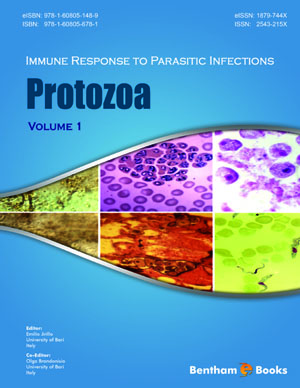Abstract
Amebiasis caused by the enteric protozoan parasite Entamoeba histolytica is among the three top causes of death from parasitic infections worldwide, as a result of amebic colitis (dysentery) and liver or brain abscess. The protective host factors as well as those that contribute to the onset of pathology remain poorly understood. E. histolytica uses a variety of strategies to suppress local and systemic host immune responses, thus allowing the parasite to persist in immunocompetent hosts. During invasive disease there is a marked down-regulation of macrophage functions rendering the cells incapable of antigen presentation and unresponsive to cytokine stimulation. Furthermore, during infections there are decreased levels of helper CD4+ T cells that are unable to proliferate with a corresponding increased level of CD8+ T cells. Not only are cell-mediated immune responses impaired during amebic infection, but humoral defenses also fail to eliminate the parasite. The relative ineffectiveness of anti-amebic antibodies during a primary infection is correlated with cysteine proteases secreted by the parasites, which can degrade human intestinal IgA and cleave the heavy chains of IgG. Moreover, E. histolytica trophozoites can internalize and degrade immunoglobulin fragments bound on their surface. As the complexity of the interactions between E. histolytica and the host is increasingly understood, it provides the tools required for the development of successful vaccines against amebiasis.






















